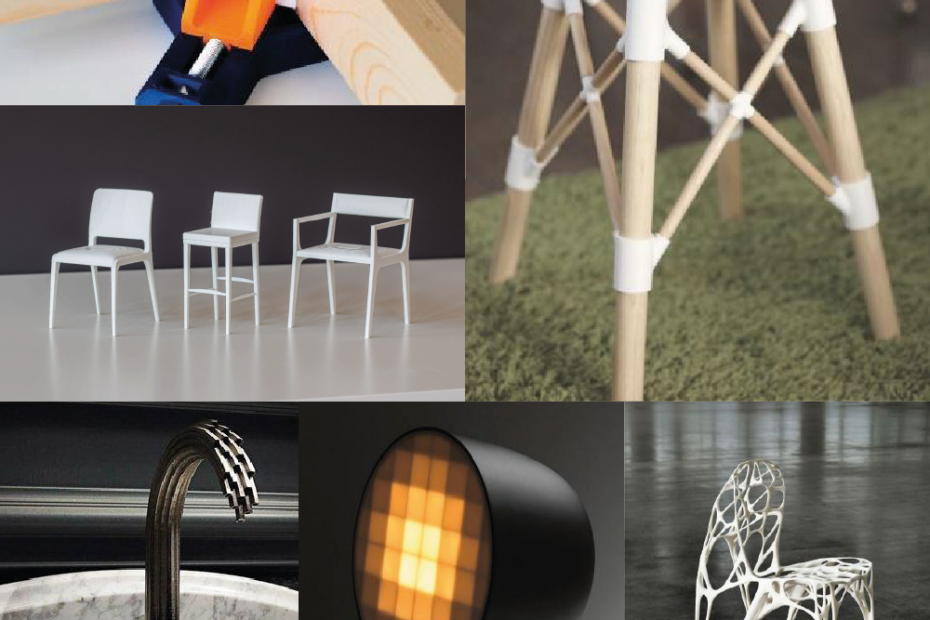Within the framework of the ALLVIEW project, CENFIM has carried out a small desk research to identify the current applications of additive manufacturing in the furniture and wood sector beyond the manufacture of prototypes. The following lines present a summary of the main applications that we have detected and that refer to the most fundamental and revolutionary aspects of this technology, such as energy-material efficiency and respect for the environment, product customization and agility in the creation of new products. The full report of this research will be published at the end of the year on the ALLVIEW project website.
In a first group we have those solutions that refer to ecology in all its aspects, such as energy efficiency and material efficiency – as it is an additive process by layers, only the necessary amount of material is used and little waste is generated, therefore generally recyclable -. In this group we can find the reuse of waste as raw material for the creation of new objects; eco-design focused on the modularity of furniture and its connecting pieces to promote reuse and recycling and reduce the carbon footprint; the creation of spare parts to promote the reuse of furniture and reduce the volume of waste generated. All these actions are perfectly aligned with sustainable design of products and social economy.
This group includes the following applications:
1. Connecting parts to facilitate the assembly and transport of furniture
2. Fittings and replacement parts for furniture repairs
3. Reuse of waste in furniture manufacturing
The second group refers to the capacity for customization and adaptation to the user that additive manufacturing allows. This second group includes solutions that make it possible to reduce production batches without the need to create new molds or constantly adapt tools or installations; applications that make it possible to adapt and personalize products according to the preferences or needs of the end user while enriching the product itself by providing more functionality and improving its usability; solutions that allow a high degree of creativity and innovation in the design and materials used in the furniture itself.
The applications that are included in this group are:
4 Furniture accessories
5. Ergonomic adaptation of furniture
6. Introduction of new materials in furniture manufacturing
7. Customization of furniture and reduction of production batches
The third group, finally, shows a series of applications related to the new limits that additive manufacturing brings to the production of furniture, allowing professionals and users to create in a more agile, fast and comfortable way products that until now were not possible to manufacture or required high constructive requirements. This group includes solutions related to the creation of prototypes with a low cost and execution time but with high fidelity to the final piece of furniture; the production of efficient assembly solutions but without the need of complex machining in the different parts of the furniture; the application of complex geometry for the production of furniture that allows reducing the number of components and can also provide a high structural rigidity to them without the need to invest a lot of raw material in the product.
The following applications are included in this group:
8. Furniture design and prototyping
9. Assemblies with complex shapes (grooves, dovetails, dowels, …)
10. Furniture with complex geometry
11. Lightweight but strong structures for furniture
